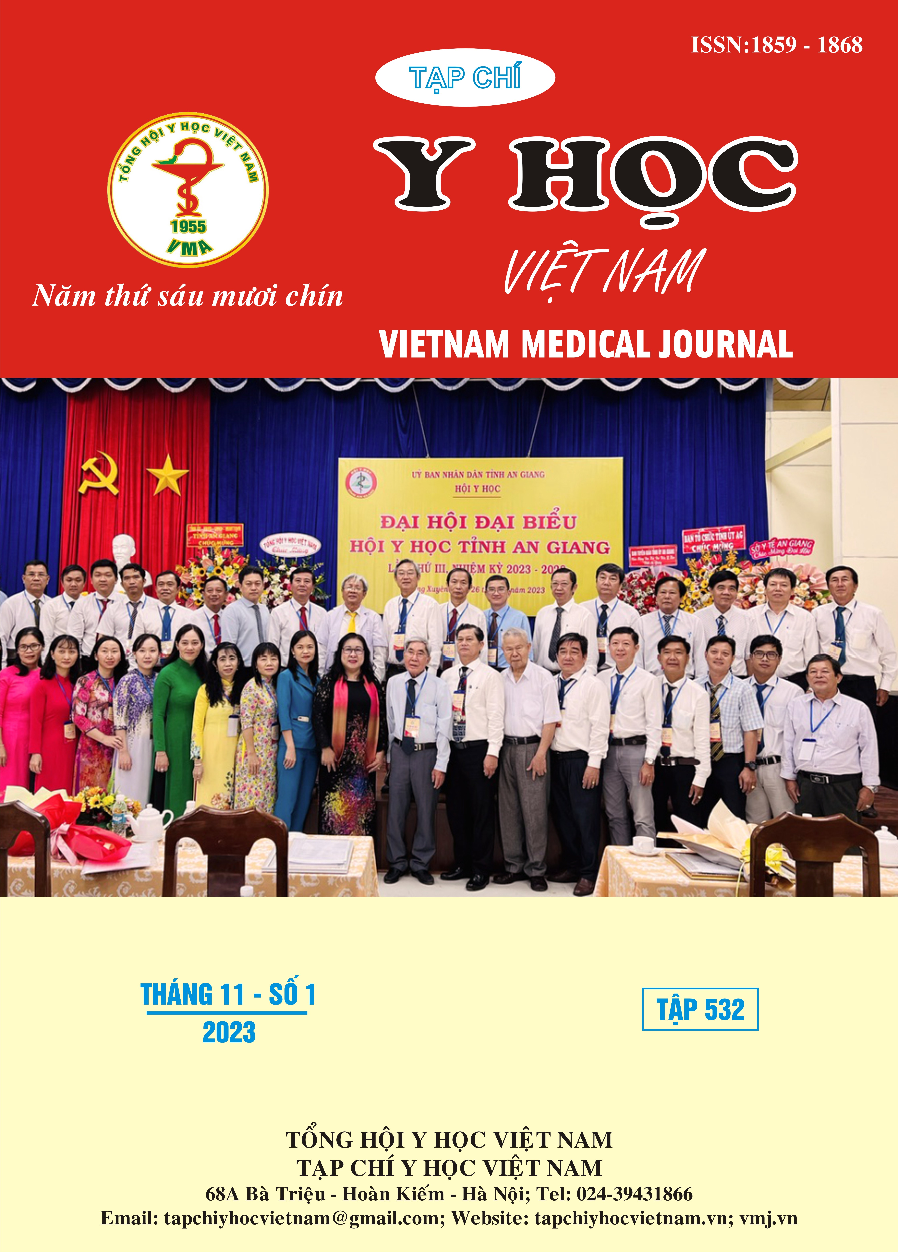NGHIÊN CỨU ĐẶC ĐIỂM BỆNH NHÂN THỰC HIỆN PHƯƠNG PHÁP PHÂN TÍCH DI TRUYỀN TRƯỚC CHUYỂN PHÔI KHÔNG XÂM LẤN
Nội dung chính của bài viết
Tóm tắt
Mục tiêu: Nghiên cứu đặc điểm bệnh nhân thực hiện phương pháp phân tích di truyền trước chuyển phôi không xâm lấn. Đối tượng và phương pháp: Nghiên cứu quan sát mô tả cắt ngang trên 14 cặp vợ chồng có chỉ định PGT-A và NiPGT-A tình nguyện tham gia nghiên cứu từ tháng 3/2020 tới tháng 11/2020 tại Viện Mô phôi Lâm sàng Quân đội được nuôi cấy phôi theo quy trình nuôi cấy đơn giọt. Kết quả: Tuổi trung bình 35,71 ± 3,17,Vô sinh 2 chiếm 85,71%,Chỉ định PGT-A, NiPGT-A chủ yếu do thất bại làm tổ liên tiếp (85,71%) và tuổi mẹ cao (57,14%), AMH trung bình là 2,32ng/mL, Số nang thứ cấp trung bình là 12,07 ± 4,12, tổng liều FSH dùng trong chu kỳ kích thích buồng trứng có kiểm soát là 2578,57 ± 483,66 IU, thời gian dùng FSH trung bình là 10,14 ± 1,1 ngày, số phức hợp noãn nang chọc hút được trung bình là 8,5 ± 4,55 phức hợp. Số noãn sau tách trung bình là 8.07 ± 3,87 noãn. Noãn MII 7,14 ± 3,63. Hợp tử 2PN trung bình là 5,21 ± 2,94, Tỷ lệ noãn MII trung bình là 89,84 ± 14,73%. Tỷ lệ thụ tinh là 73 ± 18% , tỷ lệ phôi phân cắt ngày 3 là 98,41± 4,03%, tỷ lệ phôi nang là 58.08 ± 27,8%. Kết luận: Chỉ định PGT-A, NiPGT-A chủ yếu do thất bại làm tổ liên tiếp(85,71%) và tuổi mẹ cao(57,14%), Tỷ lệ thụ tinh là 73 ± 18%, tỷ lệ phôi phân cắt ngày 3 là 98,41± 4,03%, tỷ lệ phôi nang là 58,08 ± 27,8%.
Chi tiết bài viết
Từ khóa
Nuôi cấy phôi đơn giọt, thụ tinh ống nghiệm, niPGT.
Tài liệu tham khảo
2. Friedenthal J., Maxwell S.M., Munné S. et al. (2018). Next generation sequencing for preimplantation genetic screening improves pregnancy outcomes compared with array comparative genomic hybridization in single thawed euploid embryo transfer cycles. Fertility and Sterility, 109(4), 627–632.
3. Bellver J., Bosch E., Espinós J.J. et al. (2019). Second-generation preimplantation genetic testing for aneuploidy in assisted reproduction: a SWOT analysis. Reproductive BioMedicine Online, 39(6), 905–915.
4. Barad D.H., Darmon S.K., Kushnir V.A. et al. (2017). Impact of preimplantation genetic screening on donor oocyte-recipient cycles in the United States. American Journal of Obstetrics & Gynecology, 217(5), 576.e1-576.e8.
5. Munné S., Kaplan B., Frattarelli J.L. et al. (2019). Preimplantation genetic testing for aneuploidy versus morphology as selection criteria for single frozen-thawed embryo transfer in good-prognosis patients: a multicenter randomized clinical trial. Fertil Steril, 112(6), 1071-1079.e7.
6. Northrop L.E., Treff N.R., Levy B. et al. (2010). SNP microarray-based 24 chromosome aneuploidy screening demonstrates that cleavage-stage FISH poorly predicts aneuploidy in embryos that develop to morphologically normal blastocysts. Mol Hum Reprod, 16(8), 590–600.
7. Magli M.C., Albanese C., Crippa A. et al. (2019). Deoxyribonucleic acid detection in blastocoelic fluid: a new predictor of embryo ploidy and viable pregnancy. Fertility and Sterility, 111(1), 77–85.
8. Vera-Rodriguez M., Diez-Juan A., Jimenez-Almazan J. et al. (2018). Origin and composition of cell-free DNA in spent medium from human embryo culture during preimplantation development. Hum Reprod, 33(4), 745–756.
9. Feichtinger M., Vaccari E., Carli L. et al. (2017). Non-invasive preimplantation genetic screening using array comparative genomic hybridization on spent culture media: a proof-of-concept pilot study. Reproductive BioMedicine Online, 34(6), 583–589.
10. Fang R., Yang W., Zhao X. et al. (2019). Chromosome screening using culture medium of embryos fertilised in vitro: a pilot clinical study. J Transl Med, 17(1), 73.


